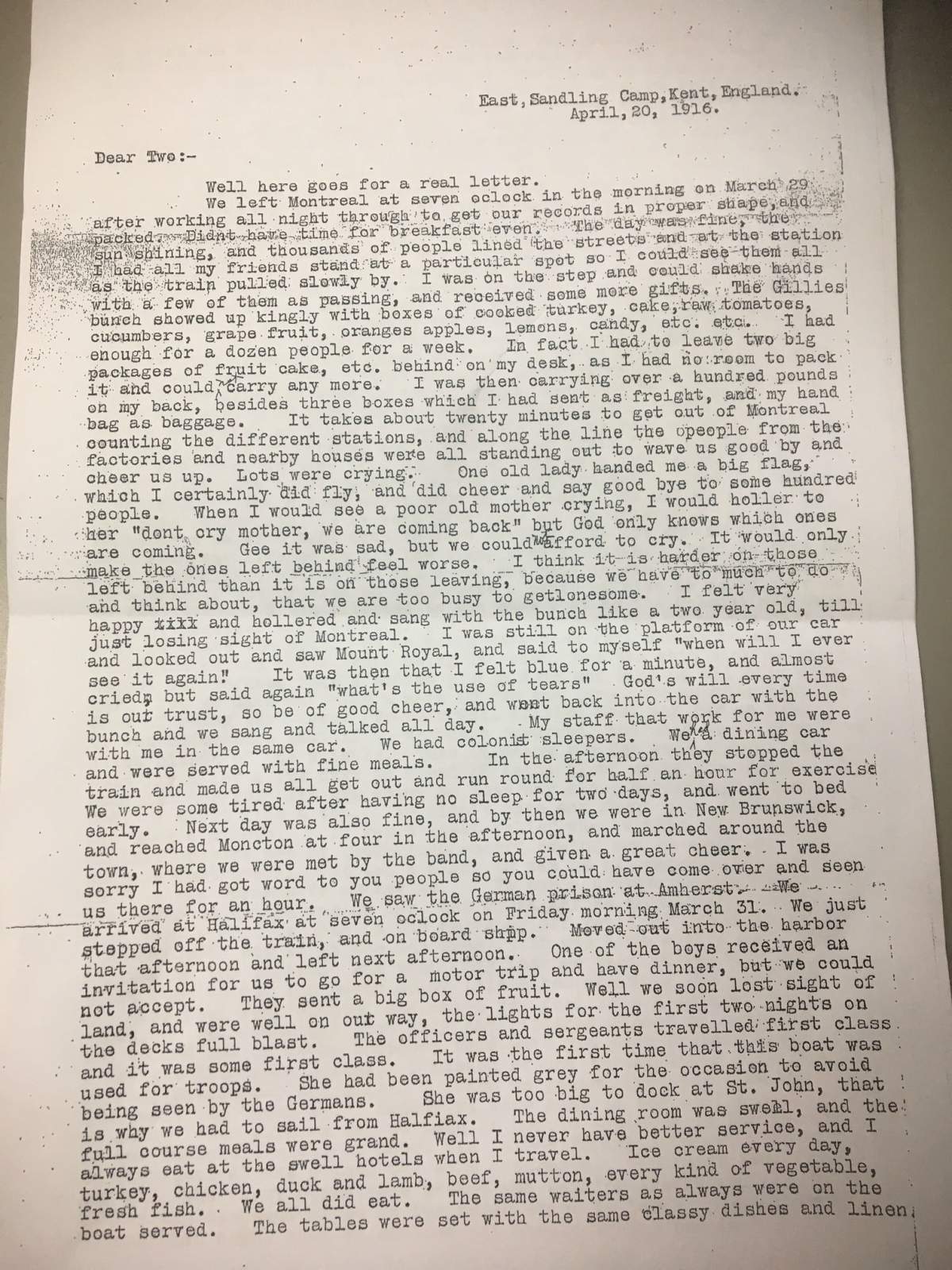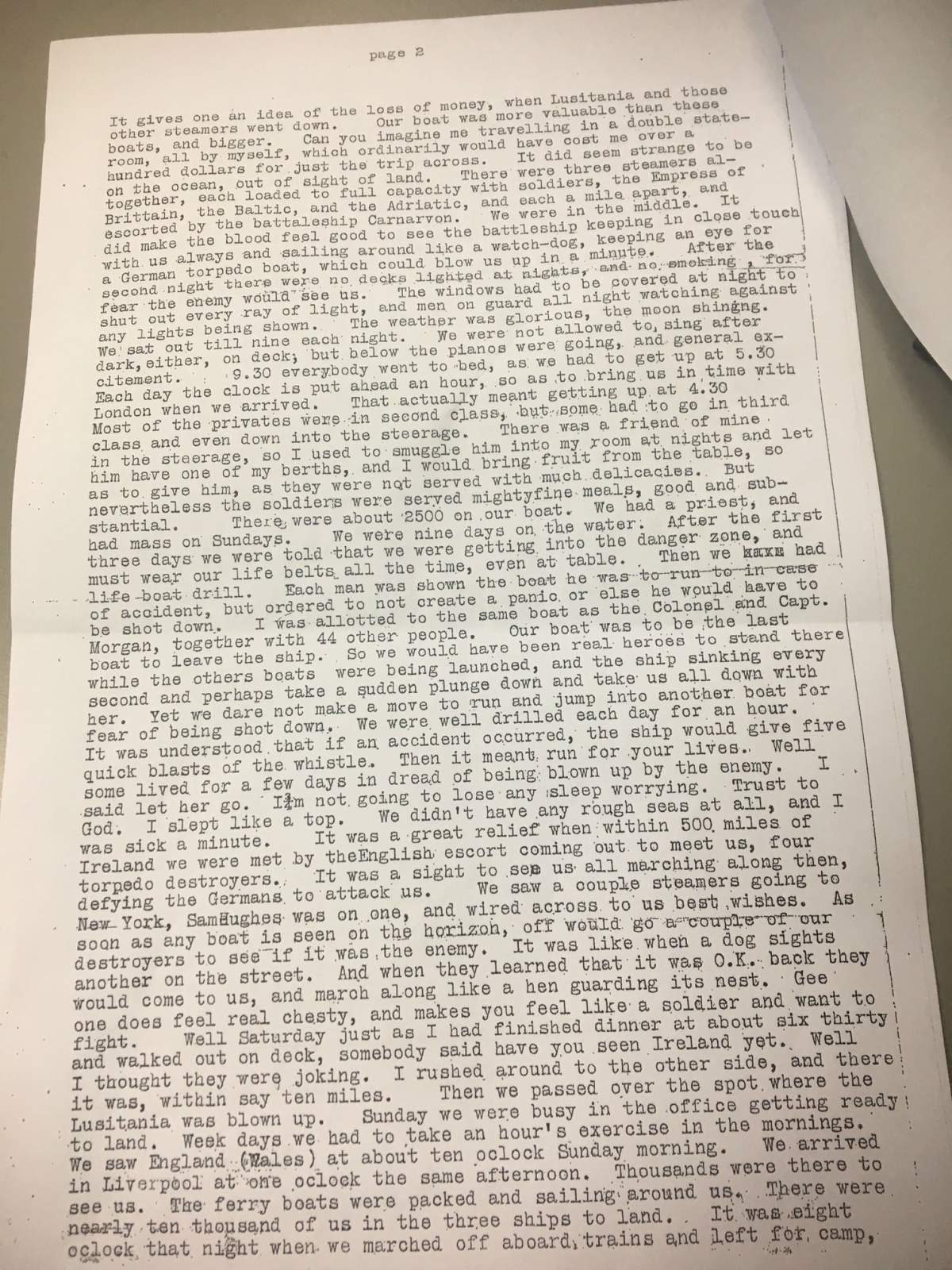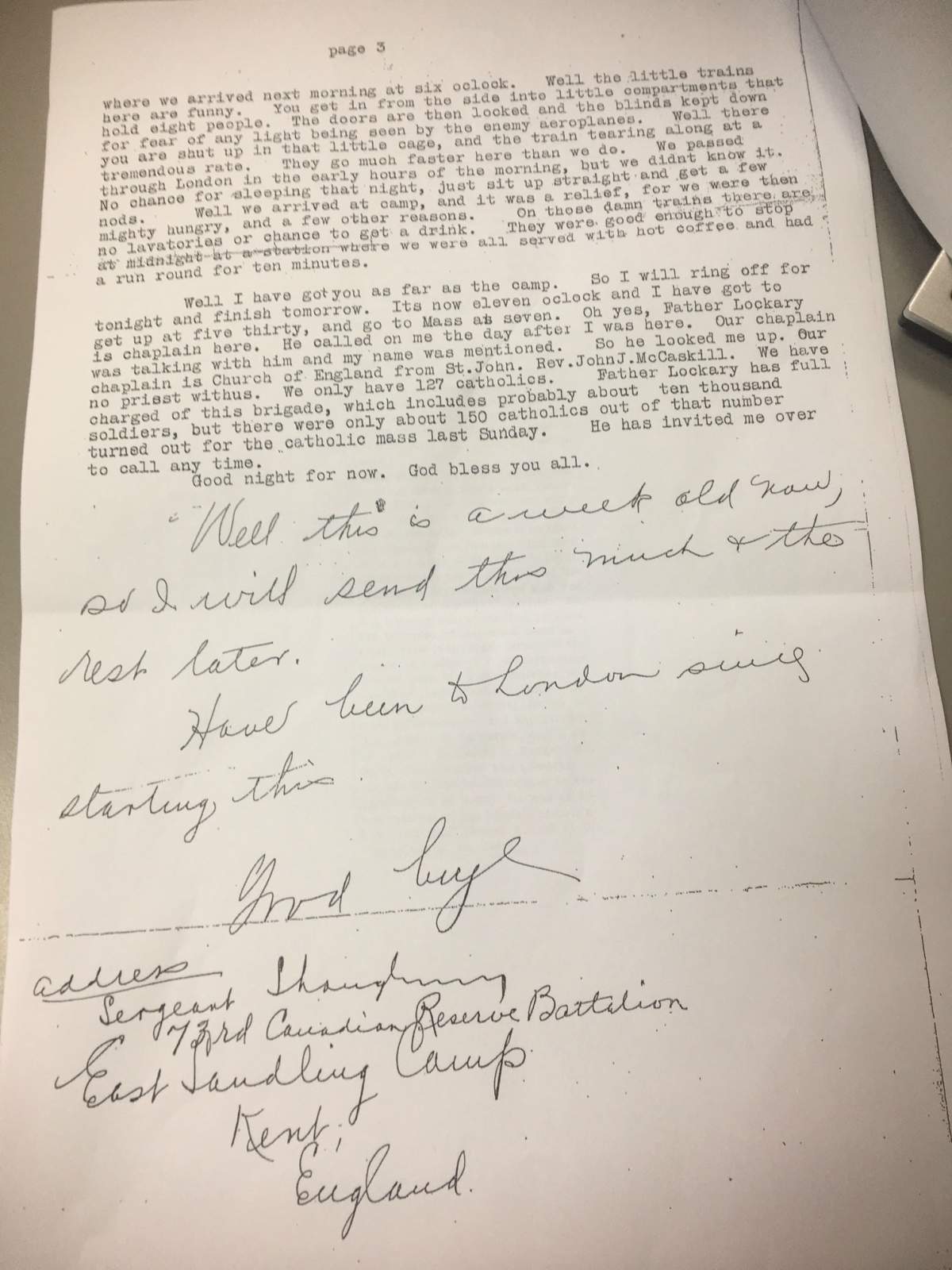The direct descendant of a First World War soldier from New Brunswick, whose remains were found near a village in France, visited the soldier’s hometown in St. Stephen this week and brought along a letter written by his once lost family member.

Jack Kennedy, who lives in Kingston Mass., is the great-great-nephew of Sgt. Harold Shaughnessy, who fought in the First World War with the 13th Canadian Infantry Battalion.
Shaughnessy’s remains were finally discovered and identified by Veterans Affairs Canada in early June, nearly 100 years after he was killed on the battlefield in France.
READ MORE: New Brunswick WWI soldier’s remains found near village in France
“The Canadian Veterans department reached out to me and apparently they had found the remains of Harold Shaughnessy in France after all these years,” Kennedy said.
“This is the story about a person who is related to me and that is pretty exciting.”
Global News tracked down Kennedy with the help of Veterans Affairs Canada and invited him to Canada to meet the town’s local historian Darren McCabe on Monday.
“It was amazing to have someone come our way who is actually a direct descendant,” McCabe said.
The Shaughnessy family homestead still lies in the town, but McCabe said most of Shaughnessy’s known immediate relatives have passed on.
“The Shaughnessy family doesn’t exist in St. Stephen anymore. The last of that family died in 2009,” he said.

Get daily National news
Kennedy has taught history for more than 40 years, which made the moment when he unveiled a letter that Shaughnessy had written to his grandmother that much more exciting for the two history buffs.
Kennedy said the letter was hidden away at the old family homestead in Maine. He said the letter had been written when the First World War soldier was shipped out.
READ MORE: Grieving military families need better communication from Forces: ombudsman
Kennedy had been using the letter as a teaching tool in his classroom for almost 30 years, all the time wondering what happened to his uncle — he and Kennedy’s maternal grandmother were siblings.
He said his uncle’s powerful words about leaving Montreal to head overseas made the Great War’s haunting history come to life for his students.
In the letter, Shaughnessy wrote about large crowds in the streets of Montreal where he enlisted cheering thousands of young soldiers off to war as they left by train.
The letter reads: “I was still on the platform of our car and looked out and saw Mount Royal and said to myself, ‘Will I ever see it again?'”
He wouldn’t.
Shaughnessy never returned home. According to Veterans Affairs Canada he was killed in the Battle of Hill 70 on Aug. 15, 1917 — a fact confirmed by a death notice that Kennedy also found in his grandmother’s house along with a photo of Shaughnessy.
READ MORE: Military couple poses for touching maternity photo while 10,000 km apart
Kennedy said his uncle’s remains will finally be laid to rest by his regiment in France later this summer.
“Even after this particular amount of time, people care and people want to do the right thing out of respect for what he did,” Kennedy said.
“It is surreal that it unfolds at this particular point.”
Kennedy retired from teaching history this year, which means he will be able to attend his uncle’s burial service in France later this summer.
He will also return to St. Stephen for a Remembrance Day ceremony honouring his uncle later this fall
“I think what I am doing is witnessing a significant part of history.”
Read Harold Shaughnessy’s letter below:










Comments